
The Gendarmenmarkt is a square in Berlin and the site of an architectural ensemble including the Berlin concert hall and the French and German Churches. In the centre of the square stands a monumental statue of poet Friedrich Schiller. The square was created by Johann Arnold Nering at the end of the seventeenth century as the Linden-Markt and reconstructed by Georg Christian Unger in 1773. The Gendarmenmarkt is named after the cuirassier regiment Gens d'Armes, which had stables at the square until 1773.

The Deutscher Werkbund is a German association of artists, architects, designers, and industrialists, established in 1907. The Werkbund became an important element in the development of modern architecture and industrial design, particularly in the later creation of the Bauhaus school of design. Its initial purpose was to establish a partnership of product manufacturers with design professionals to improve the competitiveness of German companies in global markets. The Werkbund was less an artistic movement than a state-sponsored effort to integrate traditional crafts and industrial mass production techniques, to put Germany on a competitive footing with England and the United States. Its motto Vom Sofakissen zum Städtebau indicates its range of interest.

Henry Clemens Van de Velde was a Belgian painter, architect, interior designer, and art theorist. Together with Victor Horta and Paul Hankar, he is considered one of the founders of Art Nouveau in Belgium. He worked in Paris with Samuel Bing, the founder of the first gallery of Art Nouveau in Paris. Van de Velde spent the most important part of his career in Germany and became a major figure in the German Jugendstil. He had a decisive influence on German architecture and design at the beginning of the 20th century.

Christian Rohlfs was a German painter and printmaker, one of the important representatives of German expressionism.
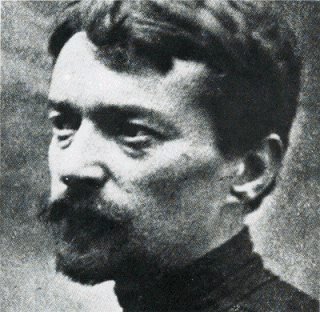
Johan Thorn Prikker was a Dutch artist who worked in Germany after 1904. His activities were very eclectic, including architecture, lithography, furniture, stained-glass windows, mosaics, tapestries and book covers as well as painting. He also worked in a variety of styles; such as Symbolism, Impressionism and Art Nouveau.
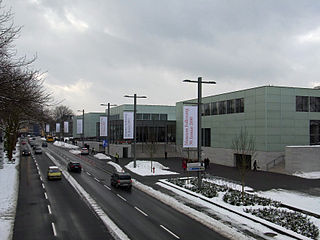
Museum Folkwang is a major collection of 19th- and 20th-century art in Essen, Germany. The museum was established in 1922 by merging the Essener Kunstmuseum, which was founded in 1906, and the private Folkwang Museum of the collector and patron Karl Ernst Osthaus in Hagen, founded in 1902.

Hagen Hauptbahnhof is a railway station serving the city of Hagen in western Germany. It is an important rail hub for the southeastern Ruhr area, offering regional and long distance connections. The station was opened in 1848 as part of the Bergisch-Märkische Railway Company's Elberfeld–Dortmund line and is one of the few stations in the Ruhr valley to retain its original station hall, which dates back to 1910.

Karl Ernst Osthaus was an important German patron of avant-garde art and architecture.

The Karl Ernst Osthaus-Museum is an art museum in Hagen, North Rhine-Westphalia, Germany. The center of the museum is a building whose interior was designed by Henry van de Velde to house Karl Ernst Osthaus' art collection, open to the public as the Museum Folkwang. When Osthaus' heirs sold his art collection to the city of Essen, the city of Hagen gained possession of the empty museum building. For a time it served as offices for the local electric company.
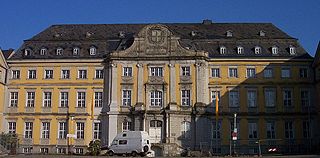
The Folkwang University of the Arts is a university for music, theater, dance, design, and academic studies, located in 4 German cities of North Rhine-Westphalia. Since 1927, its traditional main location has been in the former Werden Abbey in Essen in the Ruhr Area, with additional facilities in Duisburg, Bochum, and Dortmund, and, since 2010, at the Zeche Zollverein, a World Heritage Site also in Essen. The Folkwang University is home to the international dance company Folkwang Tanz Studio (FTS). Founded as Folkwangschule, its name was Folkwang Hochschule from 1963 until 2009.

Franz Bronstert was a German engineer and painter.
Heinrich Brocksieper was a German photographer, experimental filmmaker and painter who was educated at the Bauhaus design school.
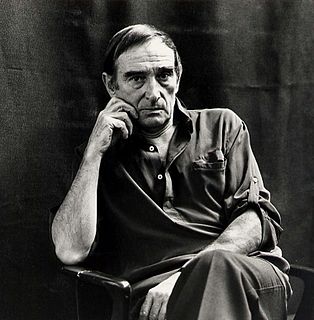
Emil Schumacher was a German painter. He was an important representative of abstract expressionism in post-war Germany.

Karl Albiker was a German sculptor, lithographer and teacher of fine arts. Albiker studied with Auguste Rodin in Paris. From 1919 to 1945 he was a professor at the Dresden Academy of Fine Arts. His monumental statues, like those of Georg Kolbe, reflected National Socialist heroic realism. Albiker created the relay racers for Berlin's Reich Sports Field and various war monuments, including those in Karlsruhe, Freiburg im Breisgau, and Greiz.
Marianne Pitzen, GER, is a German artist born in Stuttgart. In 1981, Pitzen founded the Bonn Women's Museum, of which she is the current director. The museum hosts temporary exhibitions, and has hosted over 500 since its founding. Pitzen held her first exhibition in 1969, established a gallery in 1971, and later the "Circular" magazine with her husband.
Nicole Wermers is a German artist, born in Emsdetten, and based in London.

Evgeny Iosifovich Chubarov was a Russian painter, sculptor, and graphic artist.

Emil Rudolf Weiß, or Weiss, was a German painter, typographer, graphic artist and poet.
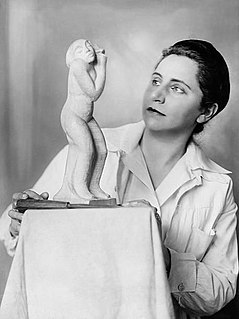
Milly Steger was a German sculptor.
The Folkwang Museum Association is a German non-profit association of citizens, patrons and companies interested in art, founded on June 1, 1922. According to the statutes, its main aim is "to manage and expand the Folkwang Museum founded by Karl Ernst Osthaus together with the city of Essen and to make it permanently available for research and popular education purposes as a public collection". The association is based in Essen, where the Folkwang Museum has been located since October 1922. A special feature of the association compared to almost all other museum associations is that, together with the city of Essen, it is co-owner of the collections of the Folkwang Museum. The association publishes its own periodical for its members, the Folkwang newsletter. Its chairman since 2015 is Ulrich Blank.

















